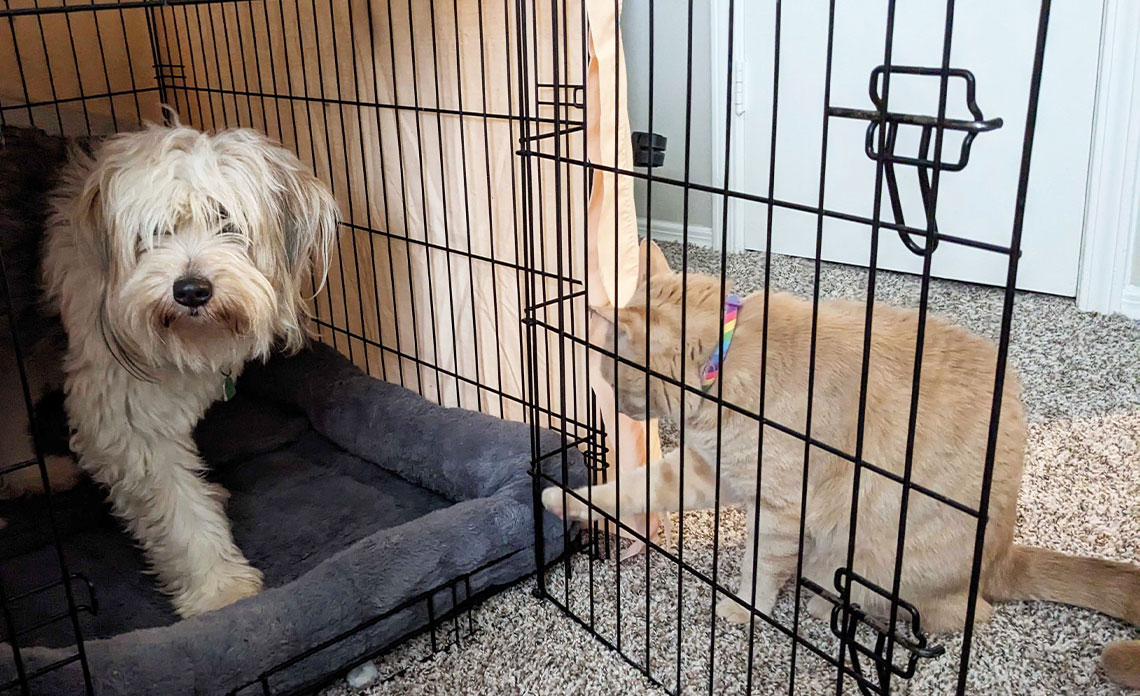Crate training is a great way to help your dog learn boundaries and become more comfortable in their own space. It can also be a useful tool for potty training and keeping your pup safe when you can’t be with them. In this article, we’ll walk you through the process of crate training your dog step by step.
Step 1: Choose the Right Crate
The first step in crate training your dog is to choose the right crate.
- The crate should be big enough for your dog to stand up, turn around, and lie down comfortably. However, it shouldn’t be so big that your dog has too much room to move around or use one end as a bathroom. Consider the size of your dog and choose a crate that will fit them well.
- If you have a puppy, you may want to consider purchasing a crate with a divider so that you can adjust the size as your pup grows.
- Crates are typically made of wire or plastic. Wire crates are durable and easy to clean, but they can be noisy. Plastic crates are quieter but can be less durable.
- Consider your dog’s personality and behavior. Some dogs may feel more comfortable in a crate with a solid plastic or fabric cover, while others may prefer an open wire crate that allows them to see their surroundings.
Step 2: Introduce Your Dog to the Crate
Once you have the right crate, it’s time to introduce your dog to it. Place the crate in a quiet area of your home, such as a bedroom or living room. Leave the door open and put a comfortable bed or blanket inside. Encourage your dog to explore the crate by placing treats or toys inside. Let your dog sniff and investigate the crate on their own terms.
Step 3: Associate the Crate with Positive Experiences
Once your dog is comfortable with the crate, it’s time to associate it with positive experiences. Start feeding your dog their meals near the crate, and gradually move the food bowl inside the crate. You can also give your dog treats or toys inside the crate, and praise them when they go inside voluntarily. Make sure your dog associates the crate with positive experiences, and avoid using it as a punishment.
Step 4: Gradually Increase Crate Time
After your dog is comfortable going in and out of the crate and associates it with positive experiences, it’s time to gradually increase the amount of time they spend inside. Start with short periods of time, such as 10-15 minutes, and gradually increase the time as your dog becomes more comfortable. Always praise your dog and offer treats or toys when they go in voluntarily.
Step 5: Use the Crate for Potty Training
The crate can also be a useful tool for potty training your dog. Dogs generally don’t like to soil their sleeping area, so using the crate can help them learn to hold their bladder until they’re outside. Take your dog outside to potty before and after crate time, and make sure to praise them when they go outside. Gradually increase the amount of time your dog spends in the crate between potty breaks.
Step 6: Use the Crate for Safety
In addition to helping with housebreaking, the crate can also provide a safe and secure place for your dog when you are not able to supervise them. This can be especially important for puppies who like to chew on things or get into trouble.
In conclusion, crate training can be a highly effective and beneficial way to train your dog. When done correctly, crate training can help with housebreaking, provide a safe and secure place for your dog to rest, and even help with behavior issues. However, it’s important to choose the right type of crate for your dog, introduce them to the crate gradually and make it a positive place, and use the crate for short periods of time only.
With patience, consistency, and positive reinforcement, you can successfully crate train your dog and enjoy the many benefits that come with it. Remember to always prioritize your dog’s comfort and safety and consult with a professional trainer or veterinarian if you have any concerns.
For more behavior and training advice, you can contact our behavior team by email or explore our training section of the website.
Stay up to date
Follow us on Facebook, Instagram and Twitter for the latest news.





